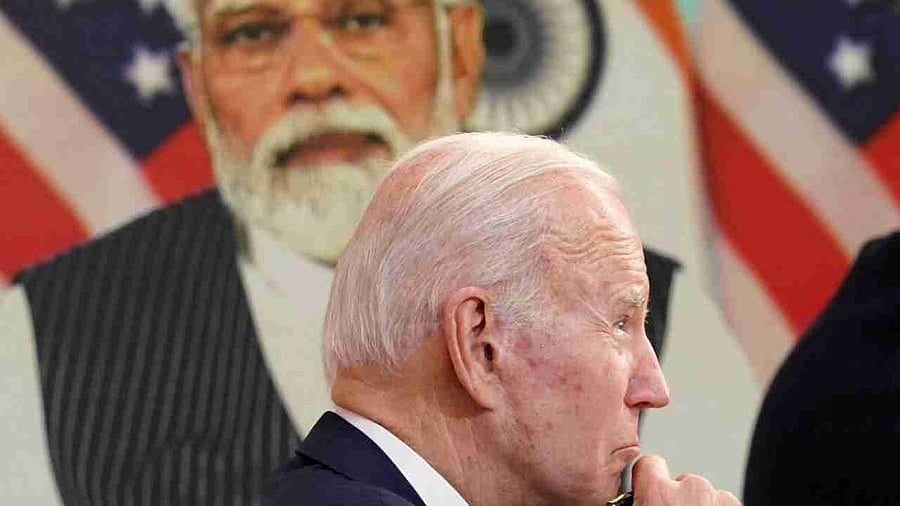

The heightened anticipation in the media, policy community and the wider public, and the comments from officials in both countries, are a recognition of the importance being attached to the visit of Prime Minister Narendra Modi to the United States from June 21 to 23. Although the prime minister has visited the US regularly since 2014, this is the first time that he will receive the higher level of protocol of a state visit.
He will also be addressing a joint session of the US Congress on June 22, for the second time. He had done it for the first time in 2016. Only a very few global leaders have had the opportunity to address the US Congress twice so far.
This reflects bipartisan support in the US Congress for the relationship with India and the growing strength of the diaspora and business stakeholders invested in it.
The US National Security Adviser was in India from June 13 to 14 to work out substantive outcomes of the visit and to sustain the momentum for the iCET, an initiative for a partnership in critical and emerging technologies, which he and his counterpart had launched on January 31 this year.
Earlier, the US Secretary of Defence Lloyd Austin came to India for a visit from June 4 to 5, exploring further steps to advance the Major Defence Partnership declared in 2016, and reportedly looked at developing a roadmap for industrial cooperation in defence, security of supply chain arrangements, and reciprocal defence procurement.
Also in the pipeline for potential approval are the GE jet engine transfer of technology and production and procurement of the MQ-9B armed drones from the US for the armed forces of India. Indian Foreign Secretary was in Washington DC on June 5 and 6 for the launch of a new Strategic Trade Dialogue, aimed at facilitating higher level technology releases required under the iCET.
The iCET has become the organizing framework for the bilateral relationship for now. It is looking at deepening cooperation in artificial intelligence, quantum, telecommunications, biotech, commercialization of space, defence and semiconductors. A message has gone out to respective government bureaucracies, academia and business, that from the national security perspective, such cooperation is to be encouraged.
The GE proposal is thus meeting receptivity. A representative of an Indian defence start-up said at a recent high-level meeting that its proposal for a deal with a major US company saw the required initial clearances in record time. Academia and business in the US would need reassurance that cooperation with India in these areas will not in the future face the kind of restrictions being imposed on China.
Specific projects of cooperation have the potential to lead to secure supply chain arrangements, production sharing, ab initio discussions on norms and standards factoring in India’s interests, and subsequent trading arrangements, including tariffs, tax and customs facilitation. An MoU on semiconductors was finalized during the visit of the US commerce secretary in March.
The program of the visit also reveals high-level attention and engagement, and different stakeholders of the relationship. On June 21, the prime minister is expected to be received by the US president and the first lady for an informal dinner. Aside from the ceremonial welcome, meeting with the president, address to the Congress and the state dinner the next day, the US Vice President and Secretary of State will host a lunch for him too.
There will be two engagements with the US business leaders and the Indian-American community later. The US-India trade has now reached a level of $191 billion, increasing more than 10 times in the last 20 years. The US companies have invested more than $50 billion in India. Indian companies, in turn, have by now invested around $40 billion in the US, and have a presence across all the 50 states.
The four-million-strong Indian-origin community now has a strong presence in the Administration (including the Vice President), Congress, and business.
The visit, therefore, will set the stage for advancing the relationship several notches. But it will need constant tending. Both countries will enter their election cycles by the end of the year. In the past, cooperation has stalled and obstacles surfaced when high-level attention was absent.
In many ways, it is still a new relationship and a determined push would be required on both sides to break out of suspicions from the past, or scepticism about the future.
(The writer is a former ambassador of India to the United States)